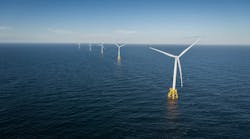The blog New Energy and Fuel, an excellent source for explanations of the science behind new energy research and development, highlights new research by a lighting team at Rensselaer Polytechnic Institute, Troy, N.Y., looking into the issue of "efficiency droop" that causes light-emitting diodes (LEDs) to loose brightness when current is increased. Efficiency droop has been an obstacle in the development of LED lighting.
The team, led by E. Fred Schubert, the Wellfleet Senior Constellation Professor of Future Chips at Rensselaer and founding director of the university’s Smart Lighting Engineering Research Center, found that the underlying problem was one of electron leakage due to assymetry between the crystals used.
“In the past, researchers and LED manufacturers have made progress in reducing efficiency droop, but some of the progress was made without understanding what causes the droop. I think now we have a better understanding of what causes the droop and this opens up specific strategies to address it,” Schubert is quoted as saying.
Read the whole thing: Solving the Last Big LED Problem, at New Energy and Fuel








